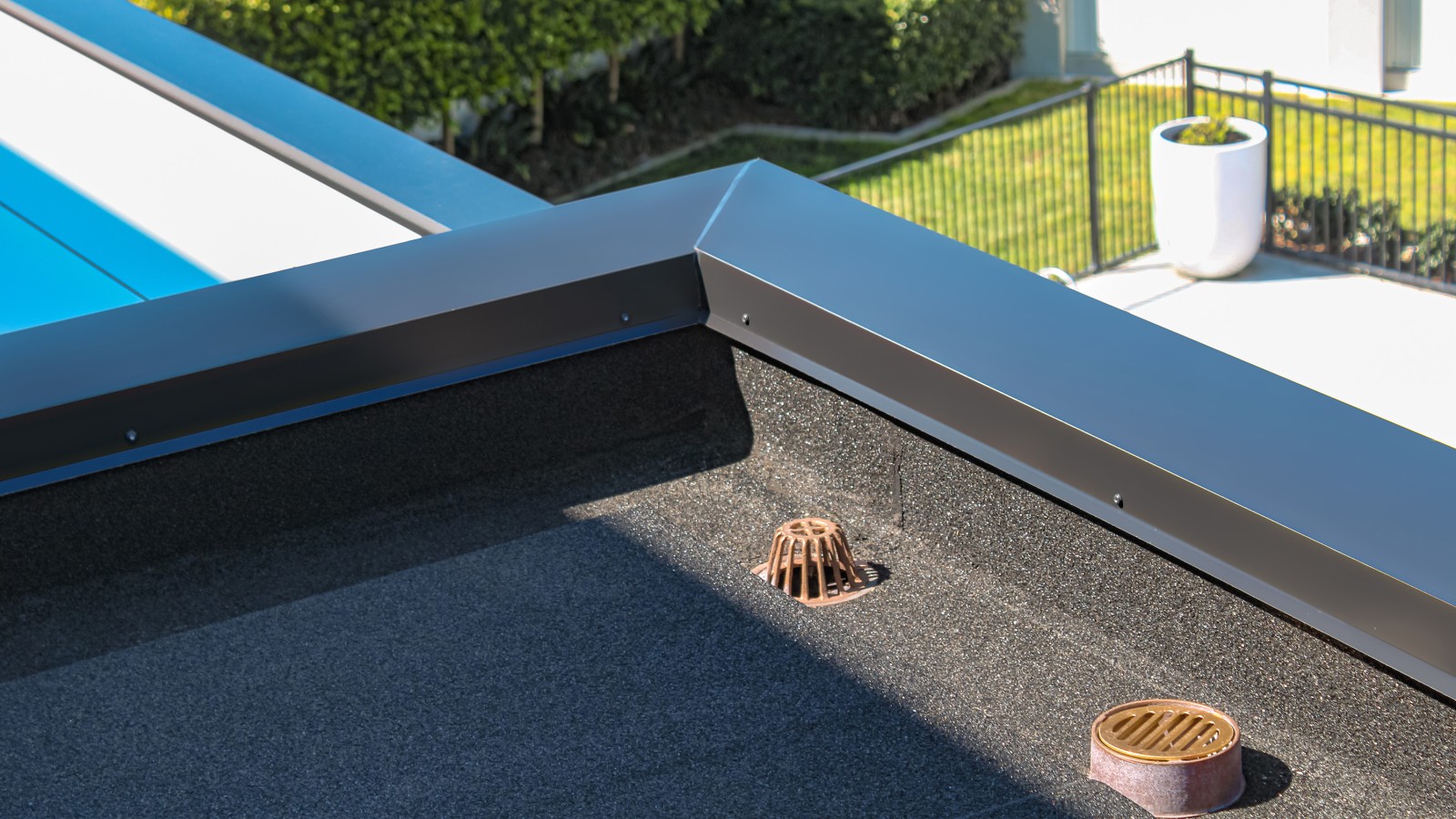When selecting a drainage product for any membrane roof or balcony installation, you need to ensure that the product is fit for purpose. When specifying the best drain for any waterproofing membrane installation, the process of product selection needs to consider the type of membrane, the location and detail of the install, the required flow rate and the project budget.
Each project is different and factors relating to the specific installation details can have an impact on the selection of a roof outlet for a particular project. When reviewing roof or balcony membrane drainage products, issues to consider include:
- Spatial: Width of gutter, proximity of downpipe to wall or corner, ceiling or soffit cavity space available for downpipe.
- Membrane type: Thickness, method (glue or heat application).
- Flow rate: Catchment area, open or covered.
- Environmental: Coastal or sea spray zone, geothermal, extreme temperatures.
Taking advantage of the different material options available such as Bronze, PVC or thick-walled engineered PVC bases and specifying these based on each unique project can give you confidence that the selected product is the right one for the roofing system and not a generic system made to fit.
When selecting a roof drain material, consideration should be taken to suit environmental factors. In areas of high corrosion such as Rotorua where elevated levels of sulphates can be deposited on building surfaces, material selection is integral. Plastic systems in this environment will have a longer lifespan than those constructed from bronze or stainless steel. Projects in a standard or marine environment will benefit from the selection of bronze or 316 stainless steel due to the long-life expectancy and extensive warranties for them.
If the roofing system is an adhesive-based install, an economical Vinylrite PVC base will be a smart solution for the penetration. Thin walled and small in diameter, it is easily installed into a gutter, allowing plenty of space around to dress the membrane through the gutter and adhere to the flange, or to get the downpipe close to the cladding line.
If the install involves a torch on or asphalt-based membrane, then a thick-walled PVC VRTW, Sureflow or a bronze outlet will provide a tested base for the penetration to be secured to with small or large diameter flanges available. From industry feedback Allproof offer straight and 88-degree outlets for all three base options. With the addition of state-of-the-art engineered ABS plastic, stainless steel or bronze clamp rings and grates, there is a finish to match all install requirements and specifications. Manufacturer warranty spans up to 50 years.
The most important part of the roof drain system is the adhesion of the membrane to the base. This is what the whole penetration relies on to ensure a watertight seal. The clamp ring is installed after this adhesion is completed to protect the edge of the membrane and provide a mounting point for the grate. Allproof works alongside other industry suppliers and installers to build a solution, which is important in these times, ensuring that a tried and tested system is supplied with in-depth install documentation and warranties.
Allproof have been supplying NZ made membrane clamp ring drains and accessories for over 30 years. In fact, Allproof began its evolution as a manufacturer of drainage products when it started supplying waterproofing products in the 1980’s — identifying the importance of specialist drainage products for waterproof membrane installations to protect the outlet penetration.





























 Most Popular
Most Popular Popular Products
Popular Products


